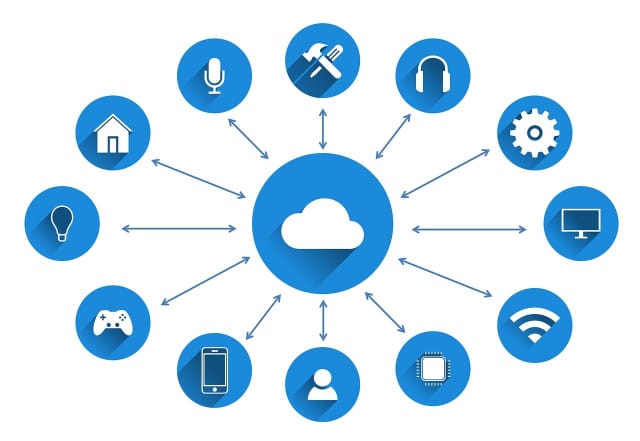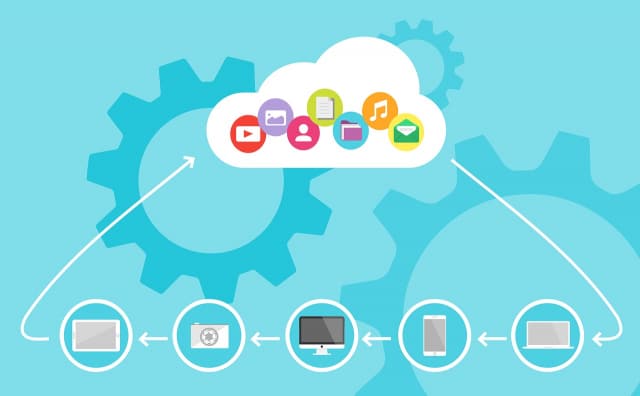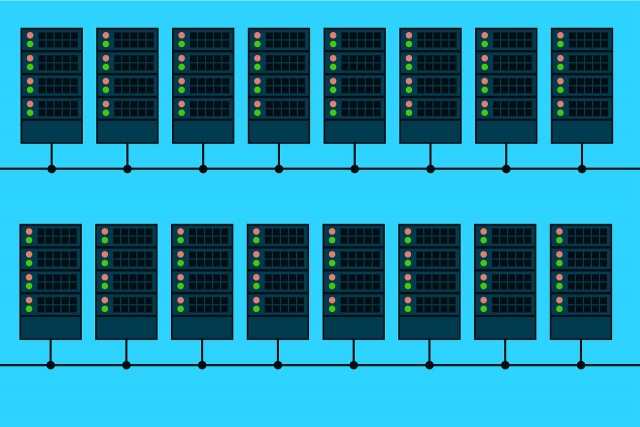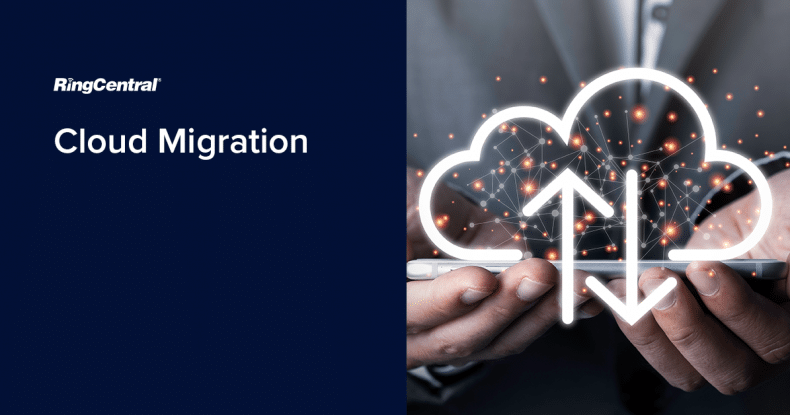In this article, we'll cover:
- What is cloud migration?
- What are the key benefits of cloud migration?
- How does the cloud migration process work?
- Types of cloud migration
- What is a cloud migration strategy checklist?
- What are the challenges of cloud migration?
- Cloud migration tools and services
- How to migrate from on-premises to the cloud
- How RingCentral can help with cloud migration
Cloud computing is at the very vanguard of the ongoing technological revolution. More and more businesses are moving data to the cloud, allowing them to dispense with on-premises servers and outsourcing their functions to third-party data centres—or data centers, in certain parts of the world. This is known as cloud migration. Before moving to the cloud, it’s crucial to develop a good understanding of the migration process and what it involves.
There’s no one-size-fits-all solution when it comes to cloud migration. There are different types of cloud migration, and the nature of your cloud migration strategy will depend on the specific needs of your individual enterprise. Your chosen cloud provider will guide you through the process and help you decide on a solution that works for your business. The provider you choose will also talk you through the various cloud solutions that are available.
What we’ve seen in recent years is that cloud migration services have been in high demand. Cloud migration has become central to the wider digital transformation that’s been taking place. As the needs and expectations of consumers and clients continue to evolve, businesses have had to embrace cloud architecture as their own needs change. In the brave new era of big data and the IoT, cloud adoption is an obvious choice for many enterprises and other organisations.
In this guide, we’ll introduce you to cloud migration. We’ll provide a concise explanation of what it is, before we then go on to list some of its key benefits. Then, we’ll explain how the cloud migration process and data transfer work, subsequently going on to discuss some of the main types of cloud migration.
After that, we’ll talk about cloud migration checklists and what should be included in them, the key challenges of cloud migration, and different cloud migration tools and services.
We’ll conclude by discussing how and why your business should migrate from on-premises data facilities to the cloud. We hope that by the end of it, you’ll have a much better-informed understanding of what cloud migration is and what its potential benefits might be. Let’s make a start by answering the big question: “What is cloud migration?”

What is cloud migration?
Cloud migration is the term given to the process of transferring databases, applications and operations to the cloud. This transfer may take place from local IT infrastructure or one cloud to another (something known as cloud-to-cloud migration). Cloud migration can take some time to complete; the exact duration will depend on what’s being transferred. Some businesses move all their data and applications, while others move some of them.
In many, if not most cases, cloud migration involves moving assets from legacy infrastructure. What do we mean when we talk about legacy rather than cloud infrastructure? In short, the term refers to a technology that has been rendered outdated by more recent advances, but which is still in use.
Many organisations (even some large ones) are still running on obsolete IT infrastructure, which can lead to inflated maintenance costs and increased unreliability. It’s a case study in falling behind the curve and suffering for it.
Not only are there different types of cloud migration, but there are also other types of cloud. There’s the private cloud; shared resources allocated within a public cloud environment which ensures some isolation between the different organisations using that space.
The public cloud, meanwhile, involves the provision of computing services by cloud providers over the public internet. Hybrid cloud (as the name suggests) combines elements of the two, mixing on-premises infrastructure, the private cloud and the public cloud.
There are numerous cloud-based services which have risen to prominence in recent years. These can be grouped under three main categories: software as a service (SaaS), infrastructure as a service (IaaS), and platform as a service (PaaS). These refer respectively to the provision of software, infrastructure and platforms to clients via the cloud. SaaS is used to provide a plethora of services, including cloud phone systems and business communications.
As we’ll go on to elaborate in the following sections, cloud migration offers a range of benefits to businesses and other organisations (including, perhaps most notably, the associated costs).
With cloud security technology continuing to advance, and a plethora of customised options available, more enterprises are migrating to the cloud while remaining compliant with requirements such as GDPR. From massive brands like Amazon to simple startups, it’s equally crucial to protect sensitive data.

What are the key benefits of cloud migration?
As we’ve noted, cloud migration offers a range of advantages to businesses. It’s allowed many of them to strip away the complexity of some processes and streamline them, saving unnecessary labour time and money. There are various other benefits as well, some of which we’ll discuss in more detail here.
While a cloud migration isn’t a silver bullet; its exact benefits will depend on your cloud model and the precise requirements of your business. Cloud migration can deliver substantial improvements in a range of areas. Let’s take a closer look at them.
Scalability
Scalability is one of the obvious advantages of cloud migration. With cloud computing and network transfer, it’s much easier to scale up and handle larger workloads among more users, even in real-time. Expanding on-premises IT infrastructure to cope with an increase of this sort can be expensive, time-consuming and logistically tricky. It requires enterprises to invest in new servers, software licenses and physical network equipment.
Cloud migration allows businesses to escape many of these constraints. Therefore, they can be more responsive as opportunities for growth appear, and the needs of clients change. Thus potentially giving them a significant competitive advantage over their rivals.

Cost
Costs are an essential consideration for any business. The bottom line is, after all, fundamental. One of the major advantages of cloud migration is that it allows companies to substantially cut down the amount of money they’re spending on IT infrastructure. Much of that infrastructure is effectively rendered unnecessary by cloud solutions.
After moving to the cloud, businesses can recalibrate their focus on the pursuit of growth, developing new products and services, or improving their current offering. Companies can redeploy resources they would have expended on IT maintenance, upgrades, and other operations.
Performance
Another crucial advantage of cloud adoption is that it allows firms to significantly enhance their overall performance. Cloud migration can deliver major improvements to efficiency, enabling businesses to reallocate their resources to more efficient uses. This can facilitate major improvements in service provision, customer experience and overall product quality.
Moreover, migrating to the cloud can help to improve reliability, speed and the general user experience. The cloud can also help reduce latency because data stored in data centres don’t have to travel as far to reach users and can also limit downtime.
Flexibility
Cloud migration can also offer enhanced flexibility. It allows users – meaning both employees and customers alike – to access whatever data and cloud services they need from wherever they happen to be. As well as allowing employees to work in a more flexible way, this also has another important advantage. It can facilitate expansion into new markets and territories, reaching consumers in other parts of the globe more easily.
How does the cloud migration process work?
There are three main steps of any cloud migration process. These are, as follows:
- Planning and preparation
- Selecting the right cloud environment
- Actual migration of applications and data
Thorough preparation involves working out precisely why you want to move to the cloud and the potential benefits you might reap from doing so. Large and technical cloud migrations will require detailed planning; it may be worth appointing a dedicated manager to oversee processes of this scale.
Your next step is to choose a suitable cloud environment. There are single-cloud and multi-cloud environments. The former involves using a single cloud provider to deliver all cloud applications and services migrated to the cloud. The latter encompasses various cloud-based services, sometimes from multiple cloud providers.
Detailed, comprehensive planning should allow the actual migration to proceed with relative ease. The exact techniques used will vary depending on the scale of the project and the size of the databases and applications being migrated. Your cloud provider will supply you with various cloud migration tools to facilitate the process.

Types of cloud migration
There are various types of cloud migration. While no two migration processes are exactly the same, there are five general types which are commonly used.
- Rehosting, or ‘lift and shift’. This is perhaps the simplest and most straightforward of all the various approaches to cloud migration. It involves transferring server operating systems, virtual machines and applications without making any changes to them.
Therefore, this method is often used by organisations that need to shift infrastructure to the cloud in a short period of time. However, it doesn’t utilise cloud-native features (such as automated recovery and self-healing) and so offers only limited use of cloud efficiencies.
- Replatforming, or ‘lift and optimise’. This method allows enterprises to take advantage of some cloud benefits, as it involves making optimisations to the operating system and implementing middleware upgrades.
This differentiates re-platforming from the standard lift and shift method, but actual changes to the codebase are still likely to be minimal. This makes it something of a halfway house between the latter and other methods involving a more comprehensive overhaul.
- Repurchase, or ‘drop and shop’. Repurchasing involves changing the proprietary application currently in use for a new cloud-based service or platform. What this often means in practice is that enterprises either cancel their existing licence agreement or leave it to expire before purchasing a replacement (such as replacing a legacy CRM with a SaaS alternative).
- Refactoring, or rearchitecting. Unlike lift and shift migration, refactoring may involve a complete overhaul of the underlying logic behind your applications as part of the migration process. Organisations which opt for this migration model are generally looking to implement a far-reaching digital transformation.
Because it is so comprehensive and complex, refactoring can consume more resources than other migration models. However, it can also enable firms to take advantage of more cloud-native capacities.
- Retain, or hybrid. Some organisations choose to retain some elements of their legacy infrastructure, either as part of a hybrid arrangement or for use as a backup system.
Businesses may also retain some stand-alone databases and workloads following a cloud migration process due to security or technical issues. A hybrid infrastructure, therefore, keeps certain aspects of the legacy system set-up while hosting other workloads in the cloud.

What is a cloud migration strategy checklist?
A cloud migration strategy checklist is, as the name indicates, a checklist covering the various stages of the migration process. It’s like a migration plan or roadmap to guide the process. Having such a checklist to hand can simplify the process and ensure that it proceeds in an organised and streamlined manner.
It should cover, for example, the level of cloud integration, individual members of staff tasked with key roles (such as managers and migration architects), cloud KPIs and performance baselines, refactoring and data migration.
What are the challenges of cloud migration?
As with any major technological project, completing a successful migration comes with its fair share of challenges and potential pitfalls. By making yourself aware of these obstacles in advance, you should be in a better position to avoid them.
The most obvious challenge is that of the financial cost. Each stage of the migration process generates its own associated costs, and these can soon begin to mount up. As we’ve discussed, advance planning can mitigate this.
There may also be some resistance within the organisation to cloud adoption. This is usually minimal, but it can happen and it’s important to be aware of the potential challenge involved. Some members of your team may be resistant, for whatever reason, to swapping their existing technologies for the cloud.
However, you can do much to prevent this by discussing your plans with your team and keeping them informed at each stage. Frank discussion and openness can provide valuable reassurance.

Another common problem with regard to cloud migration is that the requisite skills may simply be lacking. Skill shortages are a very real issue for many organisations.
Cloud migration is a big step for any business, and it represents a major technological undertaking. If you’re unable to recruit expertise from outside – this is frequently an issue as these experts are in high demand – you’ll need to cultivate it from within your organisation. This will require a strong focus on training and development.
Other problems include the logistical difficulties of transferring large databases, which can be challenging and time-consuming. Data integrity may also be an issue, as there may be a risk of data being leaked during the migration process. You should therefore redouble your efforts to ensure that data remains intact, secure, and uncompromised.
Finally, a key task is minimising disruption to your enterprise during the migration. You will need to find a way of ensuring that your systems remain operational throughout. For this reason, many businesses choose to migrate their databases and existing applications piece by piece rather than doing it all at once.

Cloud migration tools and services
There are many well-known cloud migration tools and services. These include widely-used platforms such as AWS, Microsoft Azure Stack and Google Cloud Anthos. Other such tools include Carbonite Migrate, which is used to establish a structured and repeatable migration process, hybrid cloud automation platform Turbonomic and Cloudscape, which is used to simplify cloud cost models.
Before implementing your cloud migration, you should thoroughly research the process, including the platforms, tools and services you can use to facilitate it. This research will help you find the solutions that are right for your business.

How to migrate from on-premises to the cloud
As we’ve outlined, there are many benefits of migrating from on-premises facilities to the cloud, including the prospect of lower costs, enhanced scalability, improved disaster recovery, and improved flexibility. These can translate into higher profits and greater efficiency, freeing up resources which you can then channel into better customer services and improved products.
We’ve discussed already that the exact ins and outs of the cloud migration process will depend on the organisation undertaking it. Nevertheless, there are certain continuities from which we can deduce some general ground rules.
Your chosen cloud provider will talk you through the key cloud migration steps that form the core of migration projects. These are the core stages of the cloud migration process:
1. Set clear goals. Rather than charging headlong into cloud migration, it’s best to first take a step back and get a better understanding of what you’re hoping to achieve.
What can you realistically expect it to do for your business’s performance? How long is the migration process likely to take? And what impact can you expect it to have on your bottom line? It’s important to take a hard-headed view.
Establishing clear and concrete goals provides a reliable yardstick for measuring the success, or otherwise, of your migration. If the migration hasn’t measured up to your hopes, some adjustments may be needed.
2. Develop a security strategy. We’ve already touched on how important cloud security is to organisations undertaking cloud migration projects. To keep your data safe and secure, you’ll need to adopt a robust approach to cybersecurity (which is entirely different from on-premises security).
The obvious difference here is that on-premises assets are enclosed by a network perimeter and a firewall. Once they’ve been moved to the cloud, this effectively no longer exists. However, a cloud firewall can help to keep your assets protected once they’ve been migrated to the cloud.

3. Select a cloud platform. There are numerous cloud providers and platforms to choose from, so it’s worth taking the time to peruse the various options available and find the one that suits both your needs and your budget.
How much storage are you likely to need? A clear idea of your requirements will leave you in a better position to find a solution that’s both adequate to your needs and is within your price range.
4. Complete a hardware audit. Cloud migration allows enterprises to end their reliance on outdated legacy hardware, but you should carry out a comprehensive audit first to see exactly what hardware is obsolete. A lot of existing network devices use hardware acceleration to cope with heavy traffic, but not all simulated devices support this.
5. Copy over data and transfer vital business data. Once you’ve selected a cloud provider and a suitable cloud platform, it’s time to start replicating your business databases. This is something that’ll need to be done continually throughout the migration process; it is necessary in order to keep your cloud database updated.
When moving business intelligence, you may need to refactor or rewrite code. You can either do this in a piecemeal fashion or do it simultaneously.
Once these elements of your migration process have been completed, you should be ready to make the switch to the cloud. But what should you then do with your legacy hardware? Some firms simply switch off their legacy system altogether, while others retain elements of their legacy set-up either as part of the transition to a hybrid cloud arrangement or as a backup.

How RingCentral can help with cloud migration
The technological revolution of the last decade continues to change the way businesses are run. Remote working and the resulting need for better connectivity are just some of the immediately visible changes rolling through the world of commerce.
RingCentral offers a range of cloud-based services and pricing plans to help your business make the transition. From unified communications as a service to video conferencing, RingCentral can lend your business a helping hand as it moves to cloud-based working.
Originally published Dec 14, 2020, updated May 15, 2021


